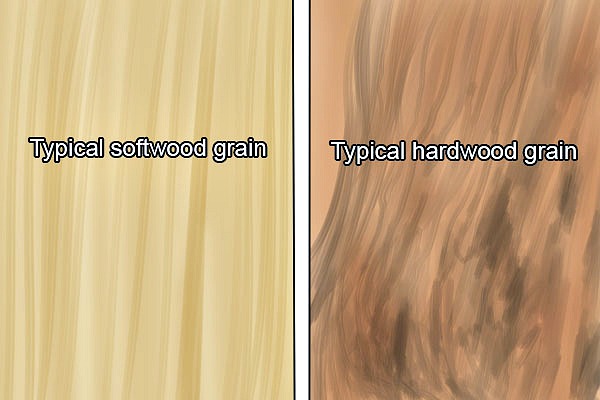Are you eager to learn how to choose the perfect softwood varieties for your cutting projects? Well, you’re in luck! In this article, we’ll share 13 fantastic tips that will make your decision-making process a breeze. Whether you’re a seasoned DIY enthusiast or just starting out, these tips are sure to help you achieve smooth and easy cutting results every time. So, let’s dive in and discover the secrets to selecting the right softwoods for your projects!
When it comes to choosing softwood varieties, there are a few key factors to consider. Our tips will cover everything from the characteristics of different softwoods to their suitability for specific cutting tasks. With this knowledge in your arsenal, you’ll be equipped to make informed decisions and achieve optimal results in your woodworking projects. We’ll also touch on some important safety considerations to ensure you stay protected while working with softwoods. Ready to get started? Let’s begin with our first tip!
Tip #1: Consider the density and hardness of the softwood. This can greatly affect how easy or challenging it is to cut through. We’ll explore some popular softwood varieties and their respective characteristics, allowing you to choose the perfect option for your cutting needs. So, let’s sharpen those blades and get ready to embark on a smooth and successful cutting journey!
13 Tips: Choosing Softwood Varieties for Easy Cutting
Softwood is a popular choice for various woodworking projects due to its versatility and affordability. However, not all softwoods are created equal when it comes to cutting ease. To ensure a smooth and efficient cutting process, here are 13 tips to consider when choosing softwood varieties.
1. Consider the Density
When choosing a softwood for easy cutting, consider its density. Softwoods with lower density tend to be easier to cut as they offer less resistance. Examples of softwood varieties with low density include pine, cedar, and cypress. These woods are commonly used in construction and furniture making due to their ease of cutting and workability.
2. Look for Clear Grain Patterns
Clear and straight grain patterns in softwoods can make cutting a breeze. These patterns indicate that the wood fibers run parallel to each other, allowing for smoother cuts. Avoid softwoods with irregular or wavy grain patterns as they can cause the blade to wander and create rough cuts.
3. Opt for Straight and Uniform Boards
When selecting softwood for easy cutting, choose boards that are straight and uniform. Curved or warped boards may require additional efforts to straighten or flatten before cutting. Look for boards that have minimal knots, as knots can be harder and more challenging to cut through.
4. Consider the Moisture Content
The moisture content of softwood can greatly affect its cutting properties. Moisture content should be between 6% and 8% for optimal cutting. Dry wood is generally easier to cut as it is less likely to cause blade dulling. Avoid freshly cut or green softwood as it can be more challenging to work with.
5. Consult Woodworking References and Guides
Woodworking references and guides can provide valuable information on the cutting properties of different softwood varieties. Consult books, online resources, or seek advice from experienced woodworkers to gain insights into the best softwood options for easy cutting.
6. Test the Wood with Small Cuts
Before committing to a large project, it’s advisable to test the cutting properties of the chosen softwood with small cuts. This allows you to assess the ease of cutting, the quality of the resulting finish, and any potential challenges that may arise.
7. Use the Right Tools and Techniques
Choosing the right tools and techniques is crucial for easy cutting of softwoods. Ensure that your saw blades are sharp and appropriate for cutting softwoods. Techniques such as using light pressure, maintaining a steady pace, and supporting the wood properly can help achieve smooth and effortless cuts.
Tips for Working with Softwood Varieties
After understanding the key considerations for choosing softwood varieties for easy cutting, here are a few additional tips to keep in mind:
1. Wear Safety Gear
Always prioritize safety when working with power tools. Wear safety goggles, gloves, and a dust mask to protect yourself from potential hazards such as flying debris and dust.
2. Plan Your Cuts
Before making any cuts, carefully plan the dimensions and layout of your project. This will minimize the need for unnecessary cuts and help maximize the efficiency and accuracy of your cutting process.
3. Maintain Proper Blade Tension
Ensure that the blade tension on your saw is properly adjusted. A loose blade can lead to inaccurate cuts, while an overly tight blade can cause binding and increase the risk of blade breakage.
4. Follow the Grain
Always cut in the direction of the wood grain to achieve cleaner and smoother cuts. Cutting against the grain can cause tear-out and result in a rough surface finish.
Choosing the Right Softwood Variety for Your Project
When it comes to choosing the right softwood variety for your project, it is essential to consider factors beyond just easy cutting. Factors such as durability, aesthetic appeal, and suitability for intended use should also be taken into account.
1. Consider the Project Requirements
Assess the specific requirements of your project, whether it be for construction, furniture-making, or crafting. Different softwood varieties have varying strengths, appearances, and workability characteristics. Choose a softwood that aligns with the unique needs of your project.
2. Seek Professional Advice
If you are unsure about which softwood variety to choose, seeking advice from professionals can be highly beneficial. Local lumberyards, woodworking supply stores, and experienced woodworkers can offer valuable recommendations based on their expertise and experience.
3. Take Price into Consideration
Softwoods are generally more affordable compared to hardwoods. However, prices can vary depending on the availability and demand for specific softwood varieties. Consider your budget and the cost-effectiveness of different softwoods when making your selection.
In conclusion, when choosing softwood varieties for easy cutting, factors such as density, grain patterns, moisture content, and straightness of boards should be taken into consideration. By following these tips and using the right tools and techniques, you can ensure a smooth and efficient cutting process. Remember to prioritize safety and consider the unique requirements of your project when selecting the right softwood variety.
Key Takeaways: 13 Tips for Choosing Softwood Varieties for Easy Cutting
- Choose from softwood varieties like pine, cedar, and fir.
- Look for straight and uniform grain patterns to ensure easy cutting.
- Avoid softwoods with knots or excessive resin content, as they can make cutting more difficult.
- Consider the hardness of the wood – softer woods are generally easier to cut.
- Research and compare different softwood options to find the one that suits your cutting needs best.
Frequently Asked Questions
In this section, we will address some common questions related to choosing softwood varieties for easy cutting.
1. What are the benefits of choosing softwood varieties for easy cutting?
Choosing softwood varieties for easy cutting has several benefits. Softwood, such as pine or fir, is typically less dense than hardwood, making it easier and faster to cut through with tools like saws. This can save you time and effort when working on woodworking projects or DIY home improvements. Additionally, softwood is generally more affordable than hardwood, which can make it a cost-effective option for many projects.
Another advantage of softwood is that it is often more readily available than hardwood. Softwood trees tend to grow faster and in larger quantities compared to hardwood trees, making it easier to find softwood products in stores or suppliers. So, if you’re looking for a convenient and budget-friendly option for your cutting needs, softwood varieties can be a great choice.
2. How do I choose the right softwood variety for easy cutting?
When choosing a softwood variety for easy cutting, there are a few factors to consider. Firstly, look for softwoods that have a straight grain. A straight grain allows for smoother and easier cutting, reducing the chances of the wood splitting or splintering. Additionally, pay attention to the density of the softwood. Softer and less dense softwoods tend to be easier to cut, providing a smoother experience.
It’s also important to consider the specific project you’re working on. Different softwoods have different characteristics, so choose a variety that suits your needs. For example, if you’re constructing outdoor furniture, consider softwoods that are resistant to rot and insect damage. On the other hand, if you’re building indoor furniture, you may prioritize aesthetics and choose a softwood variety with an appealing grain pattern.
3. Are there any softwood varieties that are particularly recommended for beginners?
Yes, there are softwood varieties that are often recommended for beginners. One of the most popular choices for beginners is pine. Pine is widely available, easy to work with, and has a relatively low density, making it easier to cut. It’s also forgiving when it comes to mistakes, as it doesn’t easily split or splinter.
Cedar is another softwood variety that can be suitable for beginners. It has a pleasant aroma, resists rot and insect damage, and is often used for outdoor projects such as fencing or decking. Remember, though, that everyone has different preferences and comfort levels, so it’s essential to experiment and find the softwood variety that works best for you.
4. How should I prepare softwood before cutting?
Preparing softwood before cutting is an important step to ensure a smooth cutting experience. Start by inspecting the wood for any visible defects, such as knots or cracks. These can affect the cutting process and may need to be avoided or worked around. You can use a knot filler or wood filler to repair minor defects, but larger or more significant defects may require selecting a different section of the wood.
Next, it is crucial to measure and mark the wood accurately. Use a square or measuring tools to mark the cuts precisely, ensuring they are straight and aligned. Taking your time to measure and mark correctly will help you achieve more accurate cuts and reduce the risk of errors or wastage.
5. What tools are best for cutting softwood?
There are various tools you can use to cut softwood effectively. One popular tool is the handsaw, which allows for precise and controlled cutting. A handsaw with a fine-tooth blade is recommended for softwood, as it provides smoother cuts. Additionally, a coping saw can be handy for making intricate or curved cuts in softwood.
If you prefer power tools, a circular saw or a jigsaw can be excellent choices for cutting softwood. Circular saws are well-suited for making straight cuts, while jigsaws are ideal for curved or irregular cuts. Just remember to always follow safety precautions and wear protective gear when using power tools.
Softwood, hardwood and semi-hardwood cuttings | Gardening 101 | Gardening Australia
Summary
Choosing the right softwood for easy cutting can make woodworking projects much easier. Here are the key points to remember:
Some softwood varieties, like pine and fir, are easier to cut than others because they have straight grain patterns and are less dense. It’s important to consider the hardness and density of the wood when choosing the right softwood for your project.
Certain softwoods, such as cedar and redwood, are resistant to decay and insect damage, making them great choices for outdoor projects. It’s also important to note that drying the wood properly can improve its workability.
By considering these factors, you can find a softwood variety that’s easy to cut and suits your project needs. Happy woodworking!

